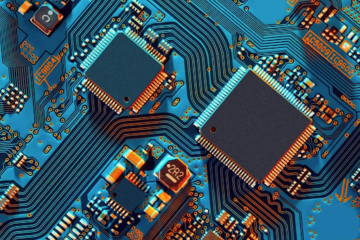Nowadays, more and more people are involved in building SPAs or single-page applications as user experience has turned out to be of utmost importance. These tend to offer smooth and dynamic experiences to the users. In this aspect, Vue.js and Laravel have emerged as two powerful technologies that are known for revolutionizing frontend and backend development. When both these frameworks are combined effectively, developers can easily develop powerful SPAs.
If you are looking forward to creating top-notch SPAs, then it is essential to learn the steps involved in the integration of Laravel and Vue.js. In this detailed blog post, we will focus on discussing the key steps that will allow you to carry out these steps on your own. If you do not want to perform these steps on your own, then you can choose to hire a professional Laravel developer from a leading Laravel development company. So, let’s move forward:
Why Laravel and Vue.js?
Laravel:
Laravel is well-known for its developer-friendly features and elegant syntax. This popular PHP framework is typically employed for building web apps. It offers a robust foundation, especially for backend development, with features such as authentication, routing, ORM Object-Relational Mapping, etc.
Due to its extensive ecosystem and expressive syntax, Laravel is known to be a preferred choice for developers who are looking for scalability and productivity. You can go for best-in-class Laravel development services.
Vue.js:
On the other hand, Vue.js is considered a progressive JavaScript framework employed to build user interfaces. With its simple syntax and component-based architecture, you can use this for creating reactive and interactive web interfaces. Vue.js is again known for providing many exciting features, including reactivity, data binding, and a virtual DOM.
All of these help developers efficiently develop SPAs while maintaining an organized and clean codebase. To learn more, you can reach out to a professional web development company.
Key Steps Involved in Integrating Laravel + Vue.js
Step 1# Laravel Set Up
The first and most important step of this process involves installing Laravel using Composer, which is the command-line tool of Laravel. Now, you need to craft a completely new Laravel project by leveraging `composer create-project—-prefer-dist laravel/laravel spa-project`. With the help of this command, it is possible to set up a fresh Laravel project in the specified directory.
Step 2# Vue.js Installation
Integration of Vue.js into Laravel is considered straightforward. Laravel Mix is generally part of Laravel’s ecosystem, which facilitates the simplification of front-end asset compilation. The next thing you need to do involves installing Vue.js along with its dependencies primarily through npm: `npm install vue`. Laravel Mix is again known for offering best-in-class support for Vue.js, which helps enable smooth integration with Laravel projects.
Step 3# Crafting of Vue Components
Now is the time to create Vue components, which typically refer to the building blocks of Vue.js applications. For this, you can take the help of dedicated Laravel developers. This step involves creating these components, especially within the `resources/js/components` directory of your Laravel project. These components are known for encapsulating UI elements and logic, which helps to effectively promote the maintainability and reusability of code.
Step 4# Routing
The subsequent step of this process involves routing. Laravel’s routing system, when combined with Vue Router, effectively facilitates navigation within SPAs. In this regard, it is important to define routes for your Vue components mainly in Laravel’s `routes/web.php` file. Vue Router is known for effectively handling client-side routing, which ensures seamless transitions between views without any page reloads.
Step 5# Integration of API
Laravel typically acts as the backend API for your Vue.js frontend. For effective handling of data retrieval, manipulation, and storage, it is integral to define API routes in Laravel. You can choose a leading web development company if you need any related aid. In this aspect, you could leverage benefits by employing the Eloquent ORM of Laravel. It interacts with the database and responds to API requests using JSON data.
Step 6# Authentication
For SPAs, implementing authentication is of utmost importance as it helps manage access control and secure user data. Laravel possesses a built-in authentication system that streamlines the overall process of executing authentication mechanisms. It includes user registration, login, and session management.
Another important thing to note is that Vue.js components can establish interaction with Laravel’s authentication endpoints. So, it facilitates effective session management and authenticates users. Choosing the best Laravel development services is always a good idea to ensure that this step is carried out effectively.
Step 7# State Management
Vue.js is known for offering Vuex, a state management library that helps manage application states in SPAs. Vuex enables centralized state management, which allows components to effortlessly share and access data. The next thing that you need to do is integrate Vuex into your Vue.js application, which facilitates effective management of intricate state logic and data flow.
Step 8# Deployment
It is straightforward to deploy Laravel and Vue.js applications. For easy and smooth deployment to cloud platforms such as DigitalOcean and AWS, you should leverage Laravel Vapor or Laravel Forge. This step also involves optimizing assets for production, which is possible by running Laravel Mix’s build commands (`npm run prod`). Thus, it boosts performance and minimizes file sizes.
If you are facing difficulties executing any of these critical steps, you can consider contacting dedicated Laravel developers. These professionals can assist you in the best possible manner by addressing your unique queries and concerns.
In a Nutshell
All in all, the integration of Vue.js and Laravel allows the developers to come up with state-of-the-art SPAs with ease. The robust backend abilities of Laravel and the dynamic frontend features of Vue.js enable developers to craft immersive user experiences. Not only that, but with this, they can maintain the code quality and scalability effectively. Thus, properly following all the essential steps mentioned in this guide can create great SPAs that facilitate effective web development. So, if you wish to achieve top-notch outcomes, then it is always a good idea to opt for the assistance of an expert Laravel developer or choose a trusted Laravel development company. Ready to reveal the true potential of modern web apps? Start your Vue.js and Laravel integration journey today!
Stay in touch to get more updates & news on Gossips!




